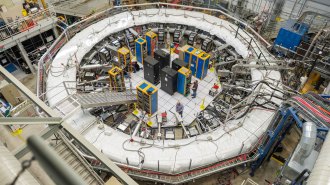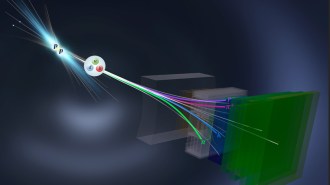Physicists have finally figured out how pentaquarks are built
Scientists pinpoint the structure of the five-quark particles

KEEP CALM AND BARYON Pentaquarks are made from two sets of smaller particles, a baryon (red), which has three quarks, and a meson (gray), which has one quark and one antiquark.
Daniel Dominguez/CERN







